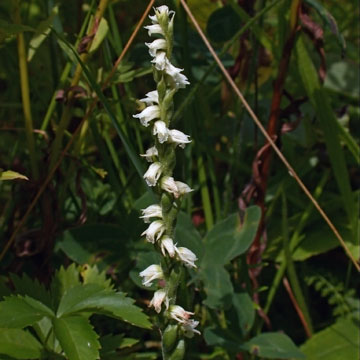

Spiranthes casei - (image 1 of 4)
Taxonomy
Family: Orchidaceae
Habitat
Sandy or shaley, acid soil.
Associates
Often with Polytrichum sp.
Distribution
Nova Scotia (var. novaescotiae); ME to northern PA, west to MI and WI. More northern than S. ochroleuca though the ranges overlap.
Morphology
Perennial to 40 cm. Leaves remaining until anthesis and withering shortly after; flowers 5-7.5 mm, loosely arranged in the inflorescence, evidently in a single spiral; lateral sepals cupped, often falcate; labellum centrally smooth and yellowish; dorsal sepal and petals barely recurved; seeds polyembryonic; 2n=60-62.
Notes
Flowers late August to early September
Wetland indicator: NA
This species is part of the Spiranthes cernua complex. Pace and Cameron (2017) concluded that this species is an ecologically specific subspecies of S. ochroleuca, however a later study (Hough and Young 2021) found evidence that S. casei is of possible hybrid origin with S. ochroleuca as one of the parent species. Spiranthes casei can be distinguished by its smaller flowers and non-recurved dorsal sepal and petals, and the tendency of the flowers to form a single spiral; it is also a polyploid with polyembryonic seeds, while S. ochroleuca is diploid and produces monoembryonic seeds.
References
Gleason, Henry A. and A. Cronquist. 1991. Manual of Vascular Plants of
Northeastern United States and Adjacent Canada. Second Ed.
The New York Botanical Garden. Bronx, NY
M. Hough and M.A. Young. 2021. A systematic survey of the Spiranthes cernua species complex (Orchidaceae) in New York. Native Orchid Conference Journal, 18(3): 22-56.
Pace, M.C. and Cameron, K.M. The systematics of the Spiranthes cernua species complex (Orchidaceae): Untangling the Gordian Knot. Systematic Botany, 42(4):1-30.
|
Michael Hough © 2017 |